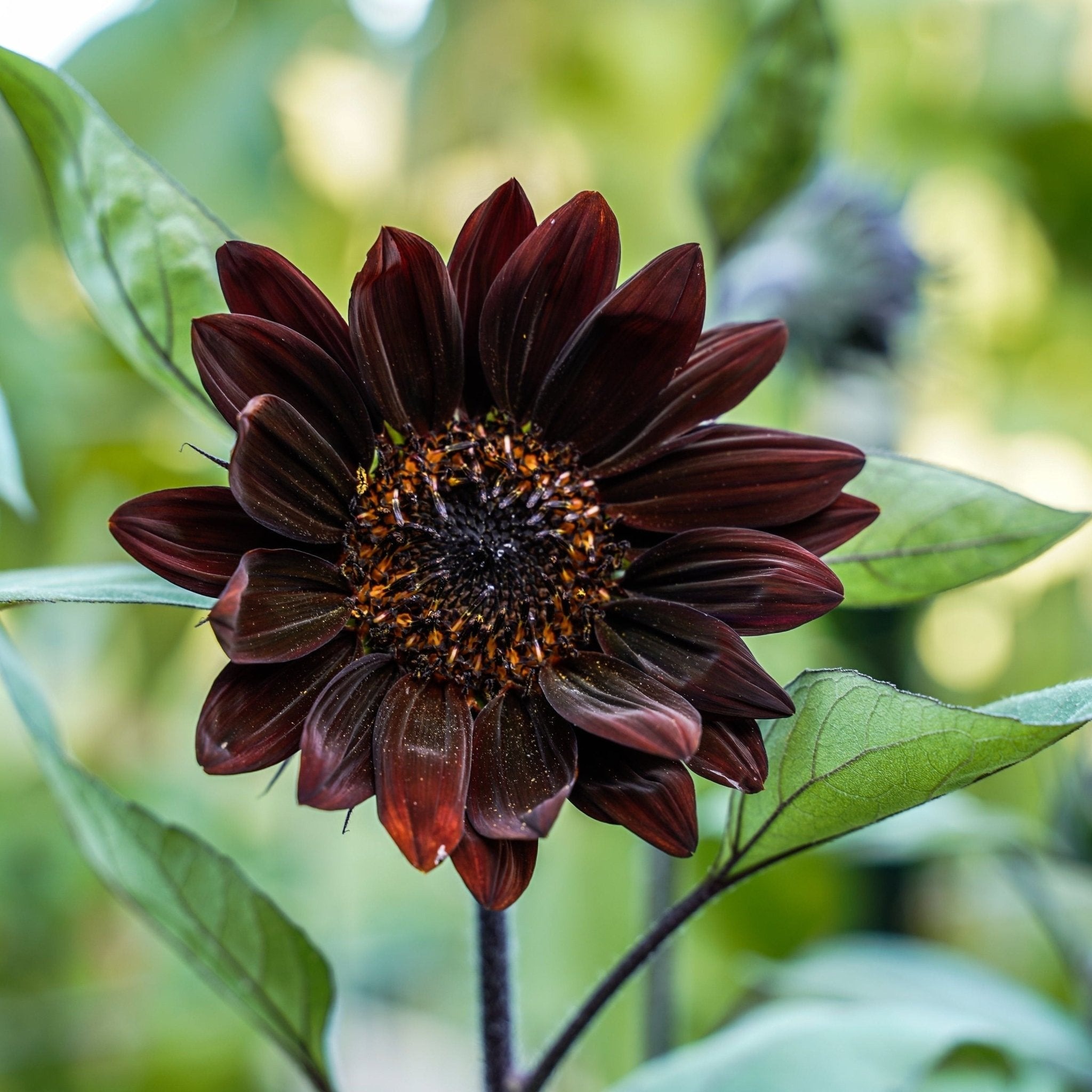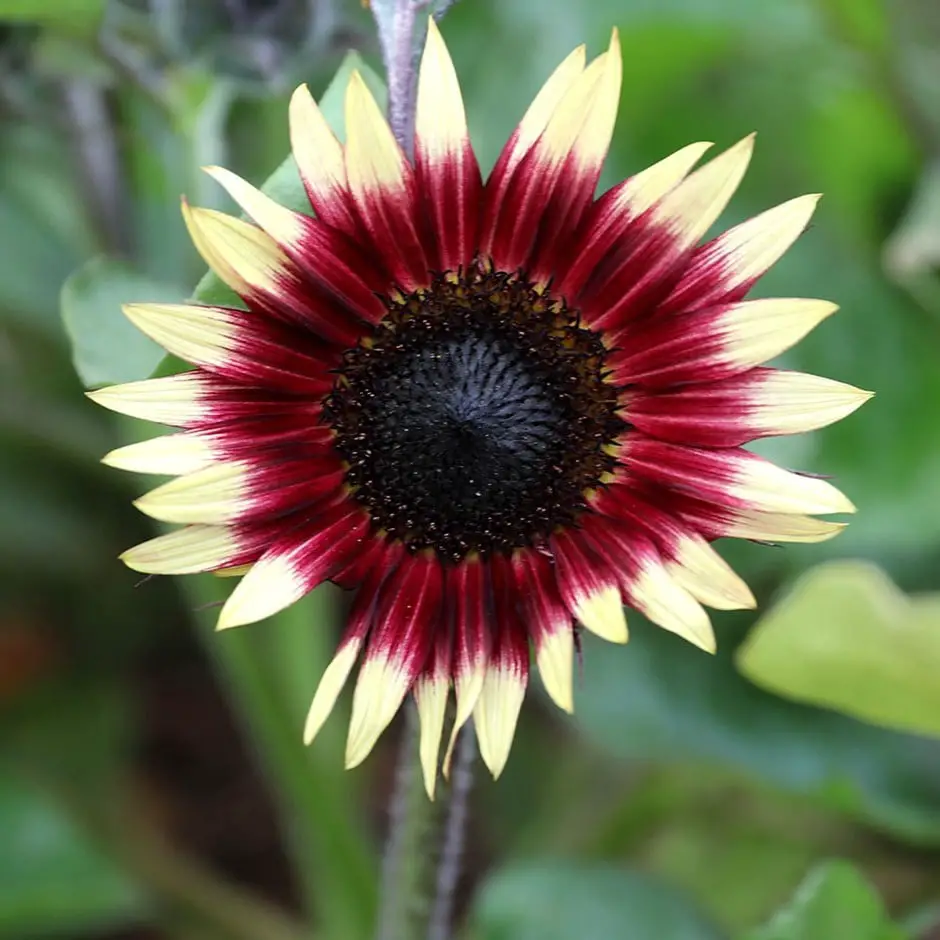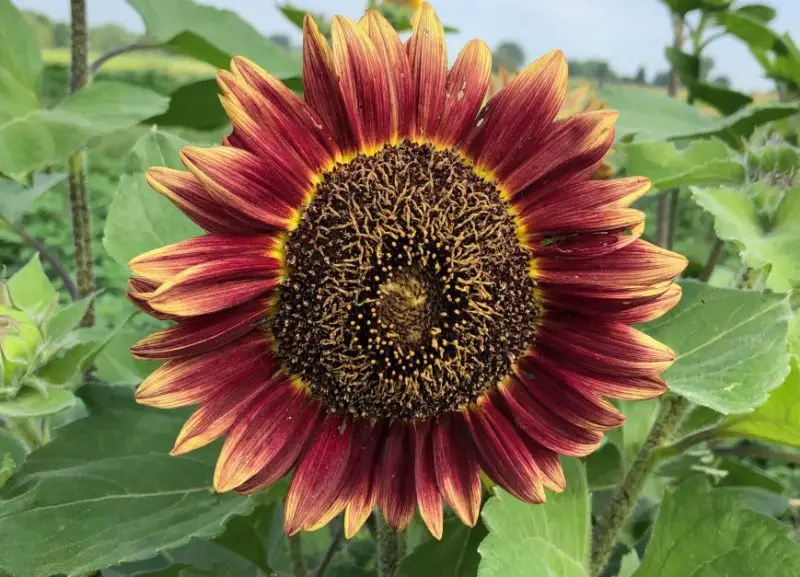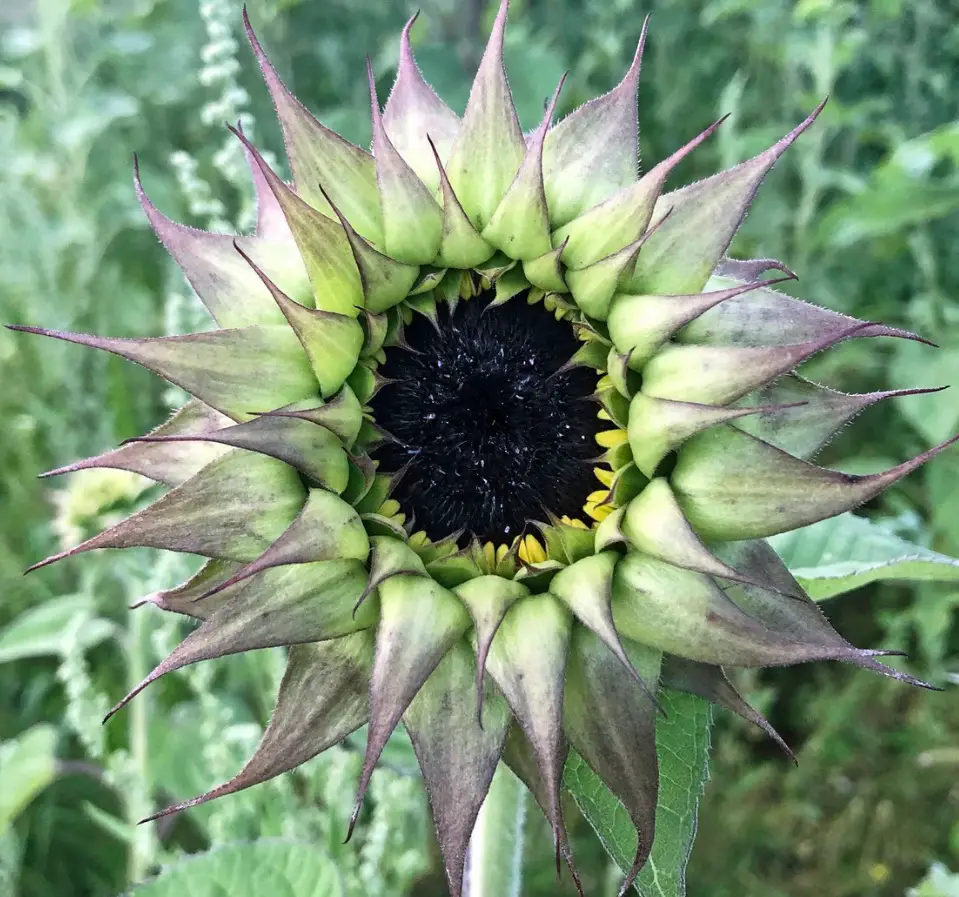Purple sunflowers are a breathtaking twist on the classic golden blooms we all know and love. With their rich burgundy, deep red, and violet-toned petals, these flowers add a dramatic and elegant touch to any garden. Unlike traditional sunflowers, purple sunflowers stand out as unique ornamental plants that captivate gardeners and flower enthusiasts alike.
These striking flowers are not just beautiful; they are also easy to grow and care for. Many varieties of purple sunflowers thrive in warm climates, attracting bees, butterflies, and other pollinators while providing a vibrant splash of color through the summer and early fall. Their bold hues make them a popular choice for garden borders, cut-flower arrangements, and decorative landscaping.
In this guide, we will explore 8 of the most stunning purple sunflowers, complete with pictures and identification tips. You’ll learn about their unique characteristics, ideal growing conditions, and how to care for them to keep your garden looking spectacular.
Types of Purple Sunflowers
Chianti Sunflower
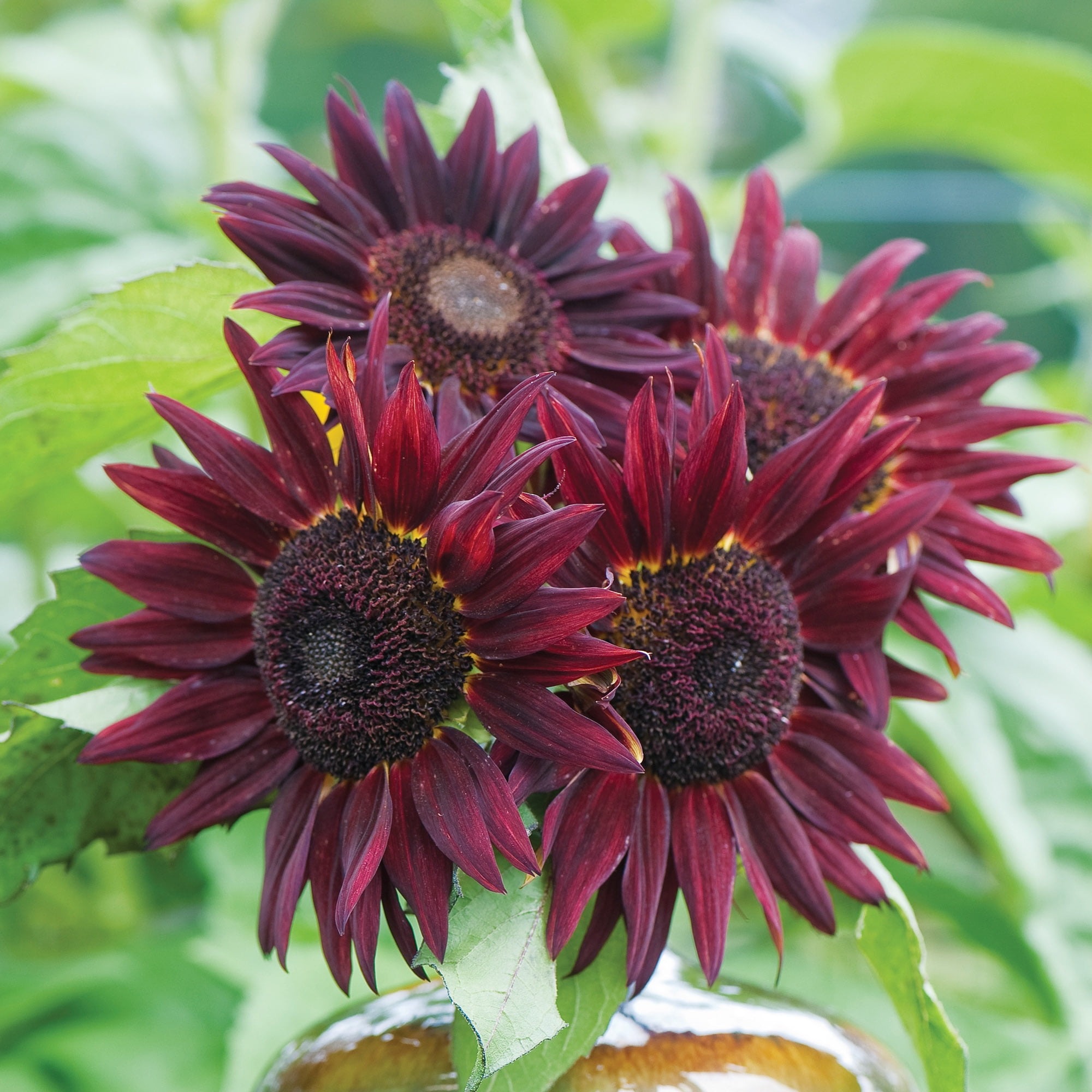
The Chianti sunflower is a stunning variety known for its deep burgundy-to-purple petals that give it a dramatic and elegant appearance. Its flower heads are medium to large, with a dark, almost black center that contrasts beautifully with the velvety petals. This pollen-free variety is a favorite among people who love sunflowers but suffer from pollen allergies. Typically, the plant reaches a height of 5 to 6 feet, making it an impressive addition to any garden border or cut-flower arrangement. Its long, sturdy stems make it ideal for floral displays.
This sunflower thrives best in USDA hardiness zones 4 to 9, where it enjoys full sun and warm temperatures. It usually blooms in mid to late summer, with flowers lasting several weeks if properly cared for. The Chianti’s vibrant colors make it a magnet for bees and butterflies, making it an excellent choice for pollinator-friendly gardens.
For successful cultivation, plant Chianti sunflower seeds in well-draining soil enriched with compost. Space the seeds 12 to 18 inches apart to allow good air circulation and prevent fungal issues. Water regularly during dry spells, but avoid overwatering, as sunflowers prefer slightly dry conditions once established. Pinching young plants can encourage bushier growth, though it is optional. Deadheading spent blooms will extend the flowering period.
The Chianti sunflower is relatively low-maintenance and can tolerate brief periods of drought once mature. However, staking may be necessary in windy areas due to its tall height. With proper care, it provides weeks of spectacular color in garden beds or bouquets.
Claret Sunflower
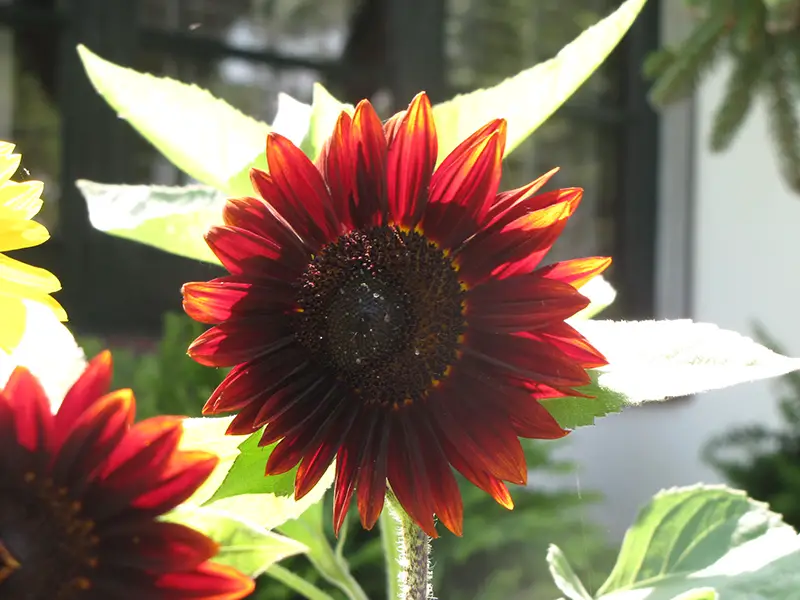
The Claret sunflower is admired for its rich burgundy petals with a subtle purple undertone, creating a regal and sophisticated look. The flower heads are large, typically with a dark brown to almost black center, making the color contrast even more striking. Claret sunflowers often reach heights between 5 and 7 feet, standing tall as bold focal points in flower gardens. Their strong stems and long-lasting blooms make them excellent for cutting and arranging in vases.
This variety thrives in USDA zones 3 to 9, blooming from midsummer through early autumn. The long blooming period makes it a favorite among gardeners looking to add late-season color to their landscapes. The Claret is also highly attractive to pollinators such as bees and butterflies, contributing to a healthy garden ecosystem.
To grow Claret sunflowers, choose a sunny location with at least 6 to 8 hours of direct sunlight daily. Plant seeds after the last frost, about 1 inch deep in fertile, well-draining soil. Keep the soil consistently moist during germination, but reduce watering once plants are established to prevent root rot. Adding organic mulch around the base can help retain soil moisture and suppress weeds.
Claret sunflowers are hardy and low-maintenance but may require staking in windy regions due to their height. Deadheading can prolong blooming, and providing occasional fertilizer during the growing season will encourage vibrant flower production. With proper care, the Claret sunflower creates a breathtaking display of rich, jewel-toned blooms.
Black Magic Sunflower
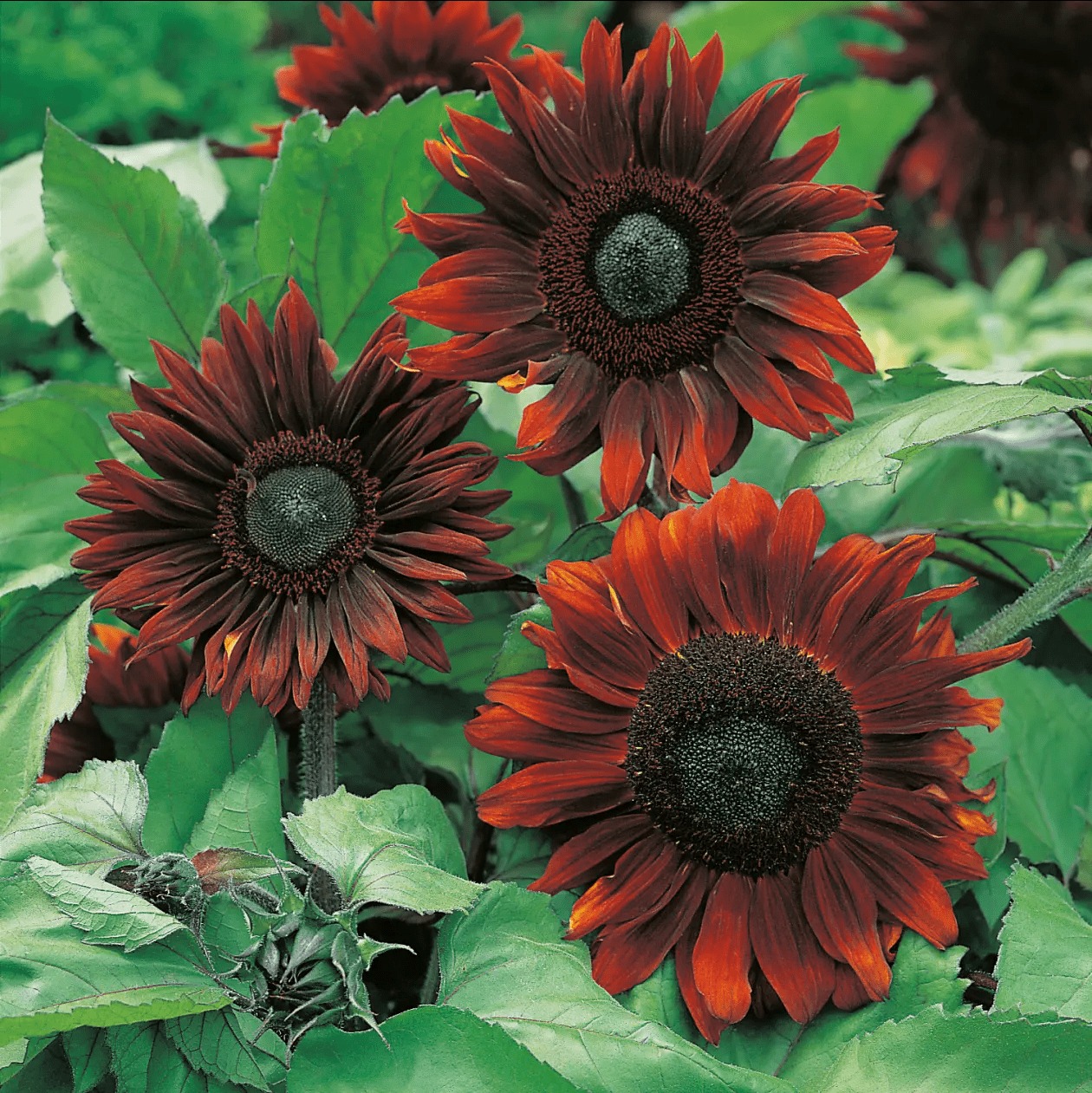
The Black Magic sunflower lives up to its name with deep burgundy petals that almost appear black under certain light conditions. Its dramatic color and velvety texture give it a mysterious and luxurious appeal. Flower heads are medium to large, featuring a dark center that enhances the plant’s gothic charm. This variety typically grows between 4 and 6 feet tall, making it suitable for mixed flower beds, borders, or as a striking backdrop in garden landscapes.
Best suited for USDA zones 4 to 9, the Black Magic sunflower blooms from mid to late summer and can continue into early fall if well-maintained. Its rich, dark colors attract pollinators such as bees, butterflies, and even hummingbirds, making it not only decorative but also beneficial for the garden’s ecosystem.
When planting Black Magic sunflower seeds, choose a sunny spot with nutrient-rich, well-draining soil. Sow seeds about 1 inch deep and space them 12 to 18 inches apart. Keep the soil moist during germination but avoid overwatering once the plants are mature. This variety prefers slightly dry conditions once established, similar to other sunflowers.
Fertilize lightly with a balanced organic fertilizer during the growing season to encourage strong stems and large blooms. Due to its height, staking may be necessary to protect the plant from strong winds. Removing faded flowers will help prolong the blooming season. With minimal care, Black Magic sunflowers add a unique and dramatic flair to any garden or floral arrangement.
Moulin Rouge Sunflower
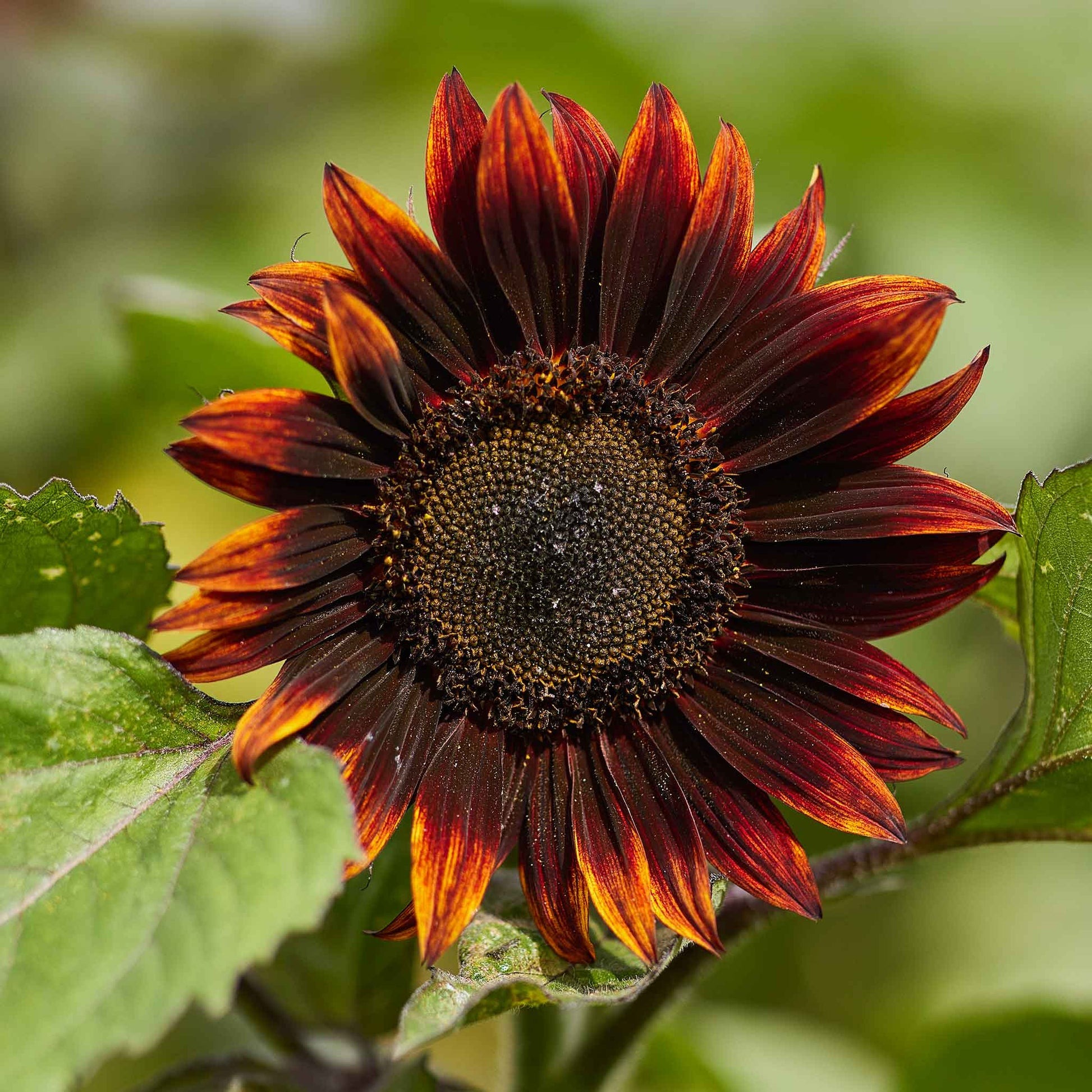
The Moulin Rouge sunflower is a classic favorite among gardeners for its deep red-to-purple petals and large flower heads. Its rich, velvety petals surround a dark brown or almost black center, giving it an elegant and eye-catching look. This variety usually grows to a height of 5 to 6 feet, with strong stems that make it perfect for cutting and creating bold floral arrangements. Unlike traditional yellow sunflowers, Moulin Rouge adds a touch of sophistication and is ideal for decorative gardens.
Well-suited for USDA hardiness zones 4 to 9, the Moulin Rouge sunflower blooms from mid-summer to early fall. The long flowering season ensures a continuous display of vibrant color. Its nectar-rich flowers are highly attractive to pollinators, making it an excellent choice for wildlife-friendly gardens.
To cultivate Moulin Rouge sunflowers, select a sunny location with rich, well-draining soil. Plant seeds after the last frost, about 1 inch deep, and keep the soil consistently moist until seedlings are established. Space plants 12 to 18 inches apart to ensure proper airflow and prevent disease. Applying a layer of mulch can help maintain soil moisture and suppress weeds.
Care for this variety is straightforward. Water deeply but infrequently to encourage deep root growth, and fertilize lightly with a balanced fertilizer during the growing season. Deadheading spent blooms will encourage more flowers to develop. Tall plants may need staking, especially in windy areas. With the right care, Moulin Rouge sunflowers will provide a bold, dramatic display throughout the summer and fall months.

